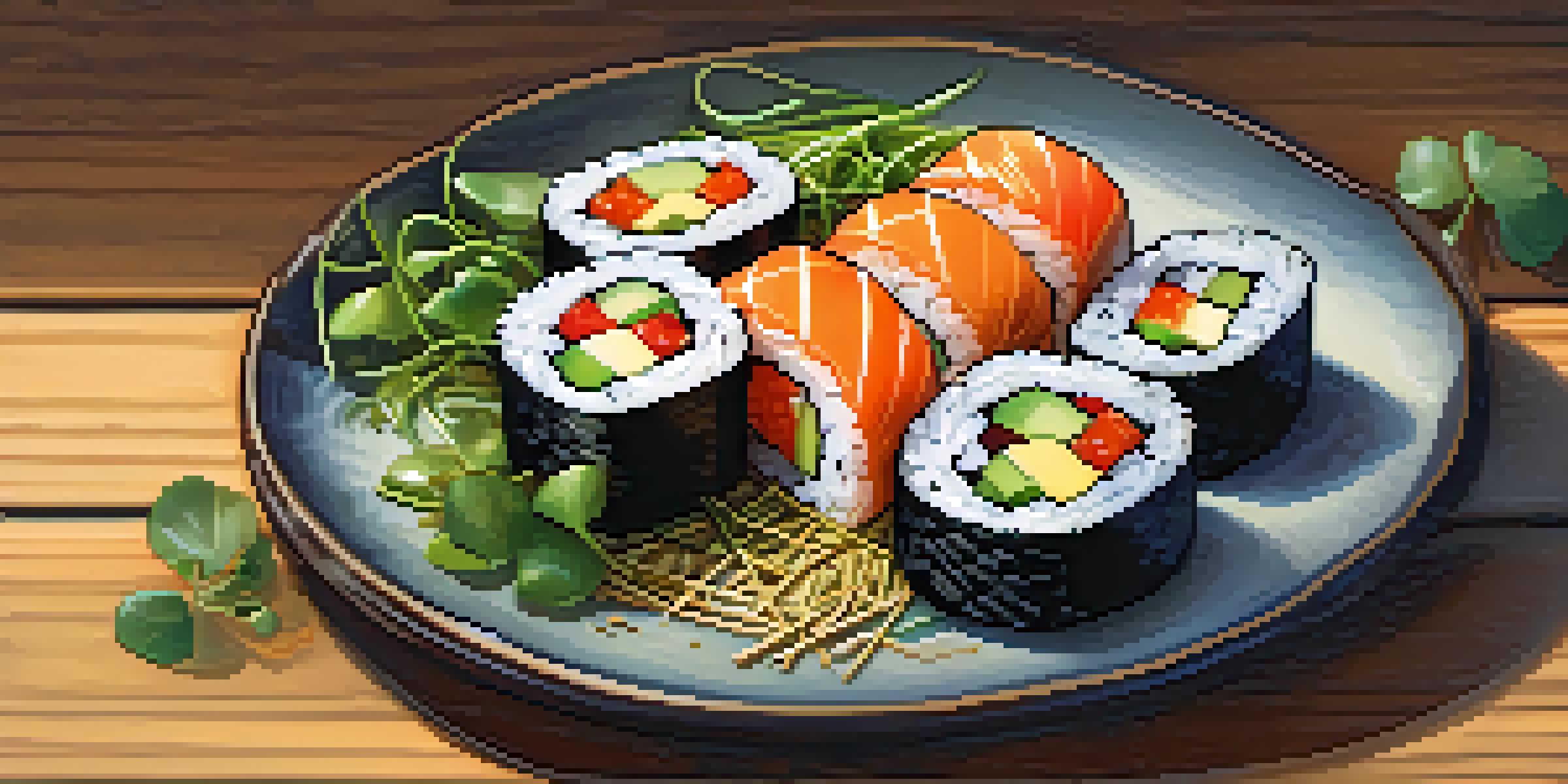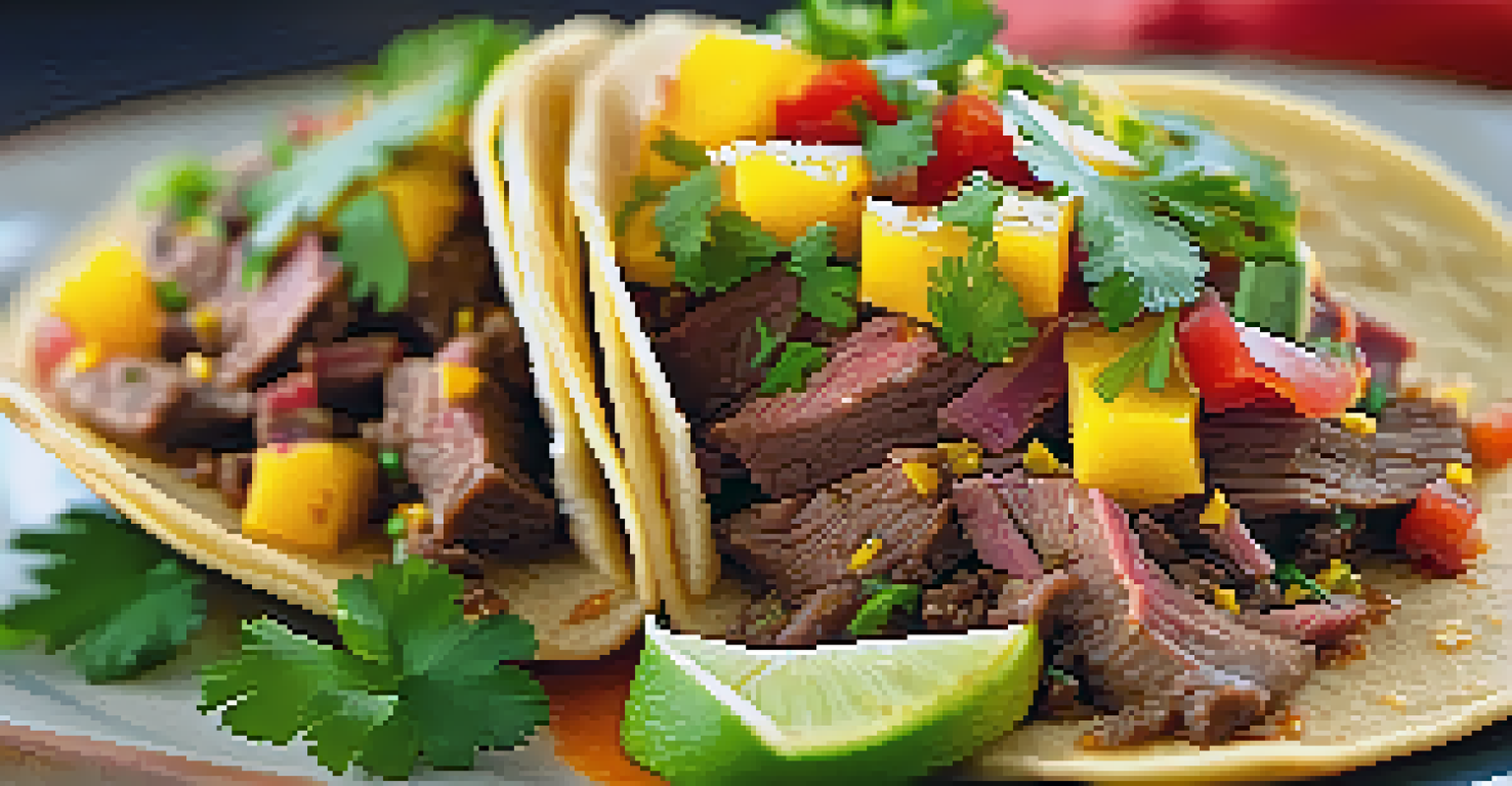Fusion Dishes: When Peruvian Meets International Flavors

The Rise of Fusion Cuisine in Culinary Trends
Fusion cuisine has taken the culinary world by storm, blending flavors from different cultures to create exciting new dishes. This movement reflects the growing appreciation for global culinary traditions, allowing chefs to experiment and innovate. Peruvian cuisine, with its rich history and diverse influences, has become a prime candidate for fusion.
Food is a universal language that brings people together, and fusion cuisine is its most exciting dialect.
As chefs explore new flavor pairings, they often draw inspiration from Peru's indigenous ingredients like quinoa, potatoes, and aji peppers. These staples can be seamlessly combined with international flavors, resulting in dishes that are both familiar and exotic. The creativity in fusion cooking not only tantalizes taste buds but also tells a story of cultural exchange.
In this article, we will delve into the world of Peruvian fusion dishes, highlighting how they marry traditional ingredients with global influences. From sushi rolls to tacos, the possibilities are endless. Let’s embark on this flavorful journey together!
Highlighting Peru's Unique Ingredients
Peru is known for its remarkable biodiversity, boasting over 3,000 varieties of potatoes and a wealth of unique herbs and spices. This rich tapestry of ingredients provides a solid foundation for fusion dishes. For example, the use of fresh Peruvian corn in an Italian risotto adds a delightful twist that elevates the dish.

Additionally, ingredients like ceviche and anticuchos have made their way into global menus, showcasing their versatility. Chefs are now incorporating traditional Peruvian flavors into international dishes, creating a bridge between cultures. Imagine a classic Japanese ramen infused with the zesty flavors of lime and cilantro—deliciously unexpected!
Fusion Cuisine Blends Cultures
Fusion cuisine creatively combines traditional ingredients from different cultures, showcasing the art of culinary innovation.
These ingredients not only enhance taste but also invite diners to explore the history of Peru’s culinary heritage. As fusion cuisine continues to evolve, the possibilities for incorporating Peru's unique offerings are limitless. It’s an invitation to experiment and discover.
Sushi with a Peruvian Twist: Nikkei Cuisine
One of the most celebrated examples of Peruvian fusion is Nikkei cuisine, which merges Japanese techniques with Peruvian ingredients. This style originated from Japanese immigrants in Peru, who adapted their traditional dishes using local produce. Sushi rolls filled with aji amarillo and avocado showcase this delightful blend of cultures.
Cooking is like love. It should be entered into with abandon or not at all.
Nikkei dishes often feature ceviche with a soy sauce-based marinade, creating an umami explosion that is hard to resist. The vibrant flavors and textures reflect the harmony between the two culinary traditions. This fusion not only honors the roots of both cuisines but also creates something entirely new.
As sushi becomes more popular worldwide, Nikkei cuisine is gaining traction, offering a fresh perspective on both Japanese and Peruvian food. It’s a beautiful example of how culinary boundaries can be blurred to create something innovative and flavorful.
Tacos: A Peruvian Take on a Mexican Classic
Tacos have become a beloved staple in many countries, and Peru is no exception. By infusing traditional taco recipes with Peruvian flavors, chefs are creating mouthwatering combinations that delight food lovers. Imagine a taco filled with slow-cooked beef marinated in aji panca, topped with a tangy mango salsa.
The use of Peruvian spices and ingredients can transform a simple taco into a gourmet experience. Furthermore, dishes like causa, a Peruvian potato salad, can inspire creative taco fillings, adding a unique twist. This blend of cultures demonstrates the adaptability of both cuisines, appealing to a diverse range of palates.
Peruvian Ingredients Shine Globally
Unique Peruvian ingredients like quinoa and aji peppers are increasingly featured in global dishes, enhancing flavor and cultural exchange.
As more people embrace global flavors, the popularity of Peruvian-inspired tacos continues to rise. They offer a delicious gateway into the world of fusion cuisine, encouraging diners to explore and experiment with flavors from different regions.
The Sweet Side of Fusion: Peruvian Desserts
Desserts are often the crowning glory of any meal, and Peruvian fusion desserts are no exception. Think of traditional desserts like tres leches cake infused with the rich flavors of lucuma, a Peruvian superfruit. This unique combination brings a new level of sweetness that is both familiar and exotic.
Another delightful example is alfajores, which can be reimagined with international flavors like matcha or chocolate ganache. These treats not only celebrate Peru’s culinary heritage but also offer a modern twist that appeals to global tastes. The creativity in dessert fusion showcases the versatility of Peruvian ingredients.
As chefs experiment with new combinations, the world of desserts expands, encouraging a sense of adventure for diners. Peruvian fusion desserts invite everyone to indulge their sweet tooth while exploring new tastes from around the globe.
Embracing Sustainability in Fusion Cuisine
Sustainability has become a crucial consideration in the culinary world, and fusion cuisine is no exception. Many Peruvian chefs are committed to using local ingredients, supporting local farmers and reducing their carbon footprint. By prioritizing sustainability, they create dishes that not only taste good but also do good.
Fusion dishes often highlight the importance of seasonal ingredients, encouraging a connection between diners and the environment. For example, using locally sourced fish in a Peruvian poke bowl not only enhances flavor but also promotes responsible fishing practices. This mindful approach reflects a growing trend in the culinary community.
Sustainability in Culinary Practices
Chefs are embracing sustainability by using local ingredients, which not only enriches flavors but also supports environmental responsibility.
As more consumers seek sustainable dining options, the demand for fusion dishes that honor the planet will continue to rise. Chefs have the opportunity to lead the way in creating delicious meals that respect both cultural traditions and environmental impact.
The Future of Peruvian Fusion Cuisine
The future of Peruvian fusion cuisine looks incredibly promising, with chefs continually pushing boundaries and exploring new flavor combinations. As globalization continues to connect cultures, we can expect even more innovative dishes that celebrate this culinary exchange. Chefs are becoming more adventurous, experimenting with flavors from unexpected sources.
The rise of social media allows for the rapid sharing of ideas and inspirations, fueling creativity in kitchens around the world. This platform gives visibility to unique fusion dishes, inviting food lovers to experience global flavors without leaving their hometowns. The culinary landscape is evolving, and Peruvian fusion is at the forefront of this movement.

Ultimately, the fusion of Peruvian cuisine with international flavors reflects our collective desire for connection and exploration. It invites diners to embark on a culinary journey, celebrating the beauty of diversity on every plate.